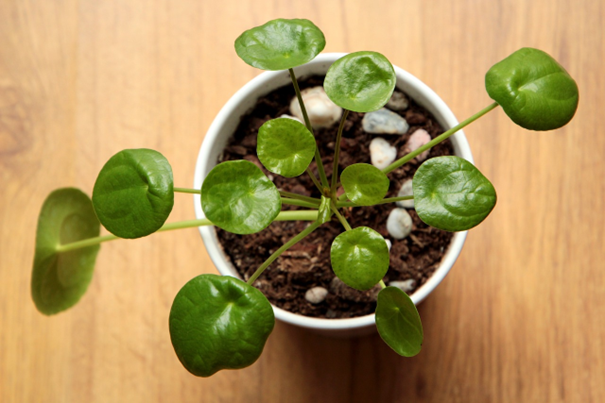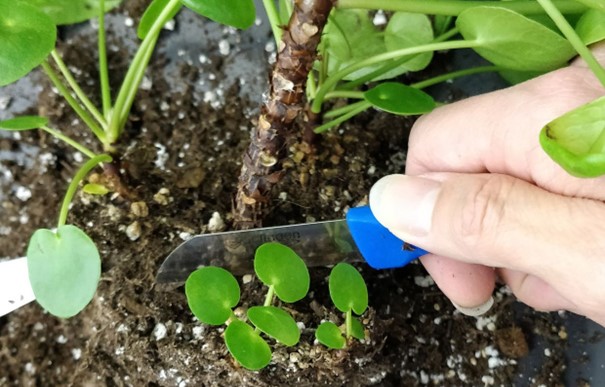What makes pilea so popular? First and foremost, their originality, thanks to their adorable round, flat, smooth leaves that dangle at the end of slender, arching stems. Then there's their ease of care and the pleasure of sharing them with others.
Particularly trendy and appreciated by green plant enthusiasts, pilea is a highly decorative plant. It's even said to bring good luck! In any case, it's known by many nicknames: "missionary plant", "UFO plant" and above all "Chinese money".
Did you know? In China, it is traditional to bury a coin at the foot of a Pilea Peperomiode, as this attracts wealth and prosperity to the area where the plant is grown.
Origin of pilea
Native to the mountainous regions of southwest China, Pilea peperomioides reached Europe in 1946 thanks to Norwegian missionary Agnar Espegren, who brought back a specimen. The plant thrived and, over the years, Espegren shared cuttings with family and friends, single-handedly transforming pilea into one of Scandinavia's most popular windowsill plants.
How to care for a pilea?
Fast-growing, the pilea reaches its adult size (30 to 60 cm) after about 2 years. The main stem gradually lengthens and thickens. New shoots grow at the top, while the plant becomes bald at the base. However, this is compensated for by the numerous shoots the healthy plant generates.
☀ Light
Place your pilea in a well-lit area (but not in direct sunlight, otherwise it may burn). You can also place it outdoors when temperatures warm up, but not in direct sunlight. Tip: turn your pilea regularly to prevent it becoming asymmetrical as it leans towards the light.
❀ Flowering
Flowering is rather discreet, greenish in color and small in size.
💧 Watering and maintenance
Water your pilea when the soil is dry (once a week in winter, twice in summer). No standing water. Tip: drooping leaves mean the plant needs water.
Flat, round leaves can collect dust, so give your plant a regular shower or at least wipe the leaves clean.
Feed your pileas every month during the growing season (spring - summer) with a low-dose fertilizer.
🌡️ Temperature
Pilea thrives at normal indoor temperatures. However, make sure your plant is not near a heating source in winter, as it could lose its leaves...
☠️ Toxicity
Pilea are generally non-toxic to pets. However, ingested in very large quantities, they may cause a mild digestive reaction.
🦟 Diseases, pests and parasites
Watch out for red spider mites. To prevent this, mist the leaves regularly to maintain a good level of humidity.
🗑 Potting and multiplication
Repotting: Repot only when the plant is feeling cramped. Use "houseplant" potting soil and a pot of the following size with adequate drainage.
Multiplication: Pilea is easy to propagate. A flowering plant will give you seedlings (which grow from the roots) which you can gently separate from the mother plant using a clean, sharp knife.
Plant the baby in well-draining soil and keep it well watered until new leaves appear. Baby plants also grow from the stem and can be cut and rooted in water. You can then pot them up and give them away to friends and family.
Common problems to avoid
The pilea is not without its problems, but these are similar to those of most houseplants.
- My pilea is receding at the base. This is normal, as the pilea grows vertically.
- Leaves are curling up. This is a sign of lack of light.
- Foliage blackens, yellows, falls off. Excessive watering or stagnant water.




